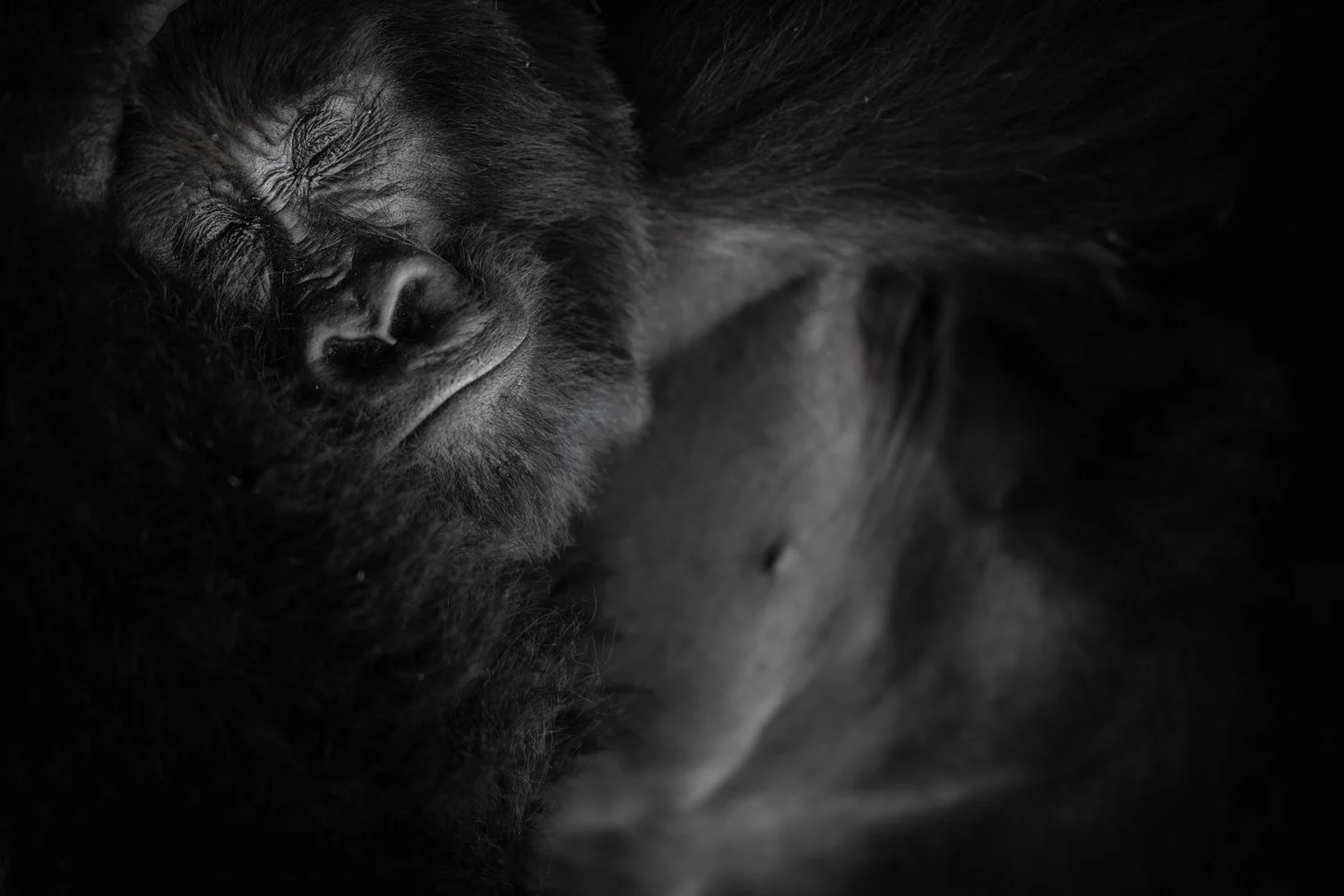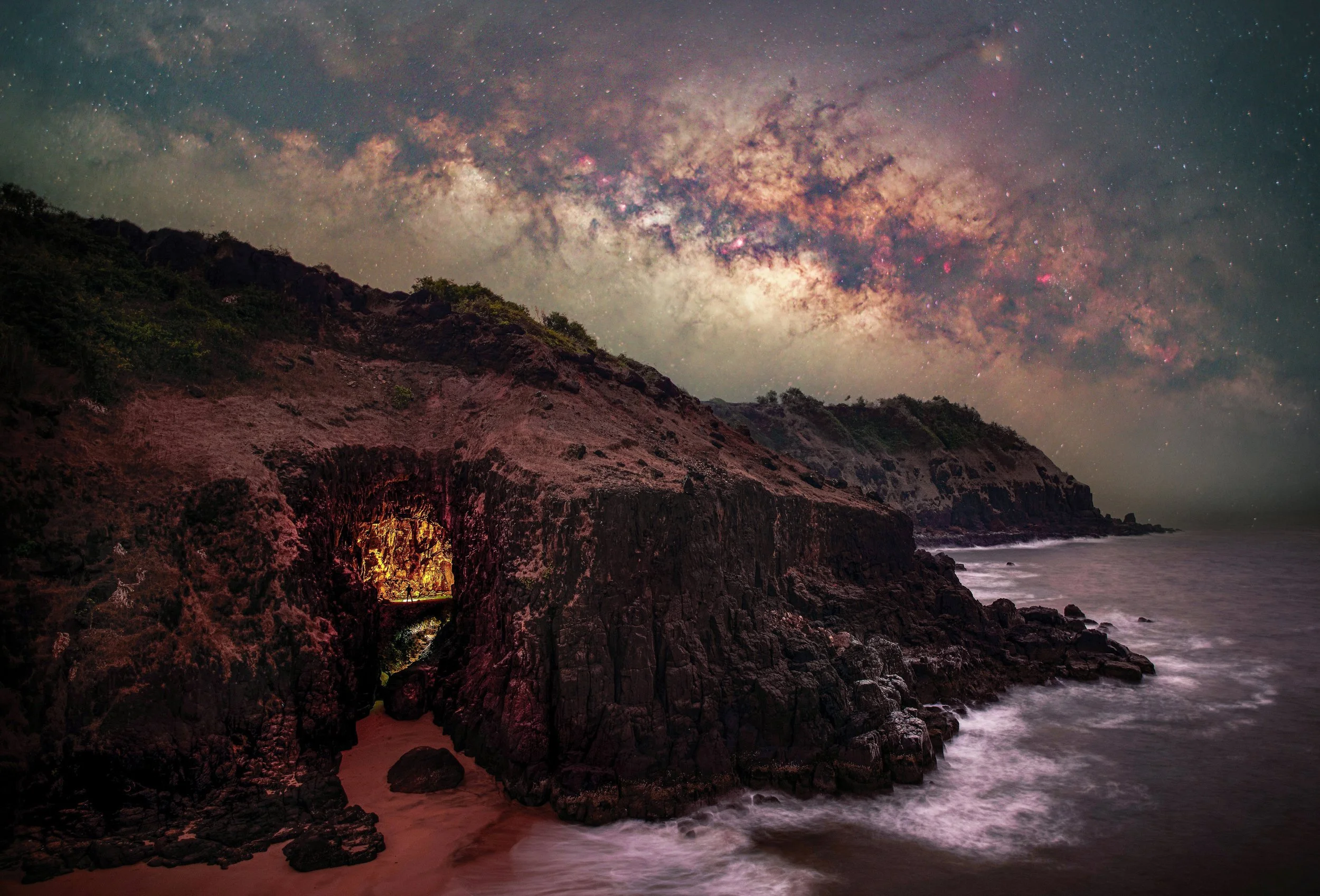Winner spotlight of World Nature Photography Awards 2025: #2
Here's this week's inspiration for you, showcasing winners across four of our diverse categories. Many congratulations to them again for winning in WNPA 2025, the nature photography contest for planet Earth.
Image © Tom Way
Captured by Tom Way, this image shows a silverback mountain gorilla in a rare moment of total calm, resting peacefully after a hefty breakfast in the forest.
This image won Tom the silver award in our 2025 category ‘Black and white’.
Mountain gorillas spend much of their day eating and sleeping, often consuming up to 20kg of vegetation daily to fuel their powerful bodies.
But what makes this image particularly powerful, is the deeper meaning behind the peaceful sleep.
Not long ago, mountain gorillas were feared to be on the brink of extinction, threatened by habitat loss and poaching.
But thanks to years of dedicated conservation efforts, including increased permit fees that support local communities, daily protection by rangers and close anti-poaching monitoring, their numbers have nearly doubled over the past 30 years.
This silverback’s peaceful nap is a quiet symbol of that progress. A species once at grave risk can now, quite literally, rest a little easier.
Image © Santanu Majumder
On the secluded shoreline of Devghali Beach in Maharashtra, India, Santanu Majumder spent an entire night waiting for a moment that few ever witness.
With no crowds, no noise and only the sound of the waves, Santanu tracked the movement of the Milky Way, patiently anticipating its alignment in the pre-dawn sky.
As the stars shifted into place, he illuminated a hidden cave that is only accessible at low tide.
The result is an image that gives us a sense of the unseen; a reminder that there are stories that exist in places untouched by light pollution and rarely explored by night.
It won Santanu the silver award in 2025's category 'Planet Earth's landscapes and environments.'
Image © Irene Amiet
Irene Amiet captured this image in the early hours of an overcast morning in Louisiana’s Atchafalaya Basin, the largest river swamp in the United States. It won her the silver award in 2025's category 'Animals in their habitat'.
Home to a rich variety of species, from wading birds to alligators and crawfish, the Atchafalaya is a critical wetland ecosystem.
Its vast network of bayous, cypress forests and floodplain lakes supports both biodiversity and flood control for the region.
While exploring this environment, Irene spotted a white heron, perched at a distance.
She carefully composed the shot to place the bird in scale against the bald cypress trees, emphasising the heron’s place in the broader landscape.
As the bird began to glide across the water, a brief shaft of sunlight broke through the clouds, allowing her to capture this well-timed image.
It’s a reminder that wetlands like the Atchafalaya are not only important for wildlife, but also for the communities and coastlines they help protect, making their conservation all the more vital.
Image © Elizabeth Yicheng Shen
This dramatic image by Elizabeth Yicheng Shen captures a moment of near danger, as an owl flies low across a busy road, with a car approaching in the background. It won her the silver award in 2025’s category ‘Urban wildlife.’
Owls are nocturnal hunters, relying on their exceptional vision and hearing to locate small rodents, often in low-light conditions.
Unfortunately, roadsides can become unintended hunting grounds: food scraps attract rodents and, in turn, rodents attract owls.
Focused on their prey and flying low, these birds are often unaware of oncoming vehicles, especially during the autumn and winter months, when rush-hour traffic coincides with peak hunting times.
In this case, the owl was fine - but many are not so lucky.
Vehicle collisions are a growing threat to owl populations in many parts of the world, adding to the pressures of habitat loss and human disturbance.
Elizabeth’s image is a call to understand the risks our infrastructure poses to wildlife and to find ways to co-exist more safely with the other species that share our world.




